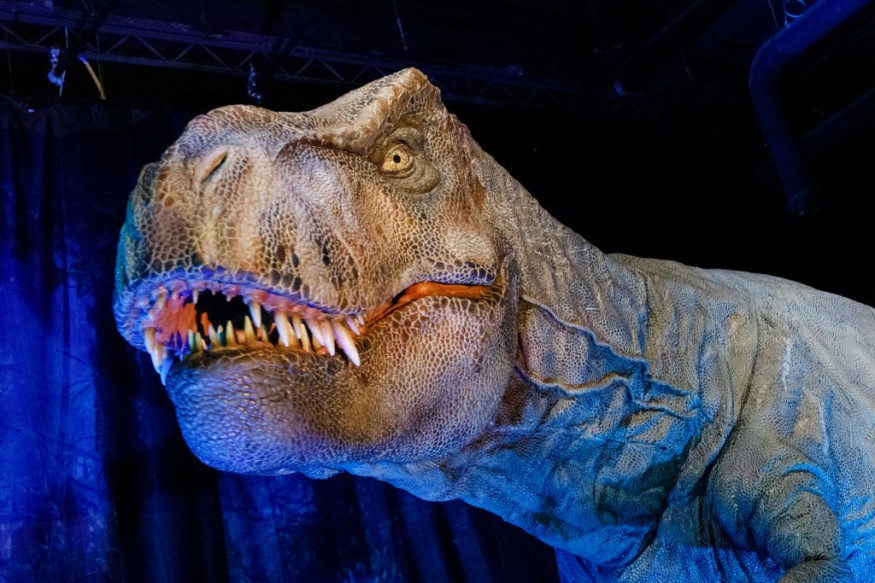
A new study strengthens the theory that long before the dinosaurs ruled, Pampaphoneus biccai was the largest and most bloodthirsty flesh eater of its day, dominating South America.
In a new study published in the Zoological Journal of the Linnean Society, an international team of researchers revealed the discovery of a 265-million-year-old, exquisitely preserved fossil species.
The fossil, unearthed in the remote area of So Gabriel, Southern Brazil, contains a complete skull as well as several skeleton bones, such as ribs and arm bones.
Importance of the fossil
Pampaphoneus biccai fossils are especially significant since they shed new light on the community structure of terrestrial ecosystems soon before the great extinction that wiped off 86% of all animal species.
The newly discovered specimen, which is larger and better preserved than the first known Pampaphoneus skull from South America, sheds light on the morphology and habits of this ancient predator.
The fossil was collected by paleontologists from UNIPAMPA and Universidade Federal do Rio Grande do Sul (UFRGS) during the course of a month of daily fieldwork.
Due to the pandemic, it took an additional three years to clean and thoroughly study the fossil.
"This animal was a gnarly-looking beast, and it must have evoked sheer dread in anything that crossed its path," said co-author Professor Stephanie E. Pierce, in the Department of Organismic and Evolutionary Biology and Curator of Vertebrate Paleontology and Mammalogy in the Museum of Comparative Zoology at Harvard. "Its discovery is key to providing a glimpse into the community structure of terrestrial ecosystems just prior to the biggest mass extinction of all time."
Although Pampaphoneus' skull is about 40cm long, research reveals that a previously unidentified fossil represents a potential third individual who was up to two times larger than the latest find.
While the latter is only known from a portion of its jaw, it has enough traits to be classified as Pampaphoneus.
The largest Pampaphoneus individuals, according to researchers, might reach about three meters in length and weigh around 400kg.
It was a competent predator that preyed on little to medium-sized prey. Some of its probable prey have been identified in the same area where the fossil was discovered, including the small dicynodont Rastodon and the huge amphibian Konzhukovia.
Pampaphoneus, a member of the early therapsid group known as dinocephalians, lived soon before the biggest extinction catastrophe in Earth's history, which wiped out 86% of all animal species worldwide.
Dinocephalians were one of the major families of big terrestrial creatures that thrived on land before to the extinction event.
They ranged in size from medium to large, including carnivorous and herbivorous representatives. Dinocephalians had massive cranial bones, which gave rise to the moniker "terrible head" in Greek.
"Finding a new Pampaphoneus skull after so long was extremely important for increasing our knowledge about the animal, which was previously difficult to differentiate from its Russian relatives," said lead author Mateus A. Costa Santos, a graduate student in the Paleontology Laboratory at the Federal University of Pampa (UNIPAMPA).
Read Also : 5 Most Important Fossil Discoveries in the World
Brazil's rich paleontological potential
The discovery of the Pampaphoneus biccai fossil also shows the rich paleontological potential of Brazil's Pampa area.
Along with this top predator, other animals found in the same habitat include the little dicynodont Rastodon and the large amphibian Konzhukovia.
These findings add to the understanding of the region's prehistoric environment and evolutionary history.
While Dinocephalians are well-known in South Africa and Russia, they are uncommon in other parts of the world. Pampaphoneus biccai is the sole species known from Brazil.
Related Article : Fossils of Ravens Reveal the Relationship Between Early Humans and Birds in Beijing
Related Video:
© 2025 NatureWorldNews.com All rights reserved. Do not reproduce without permission.





